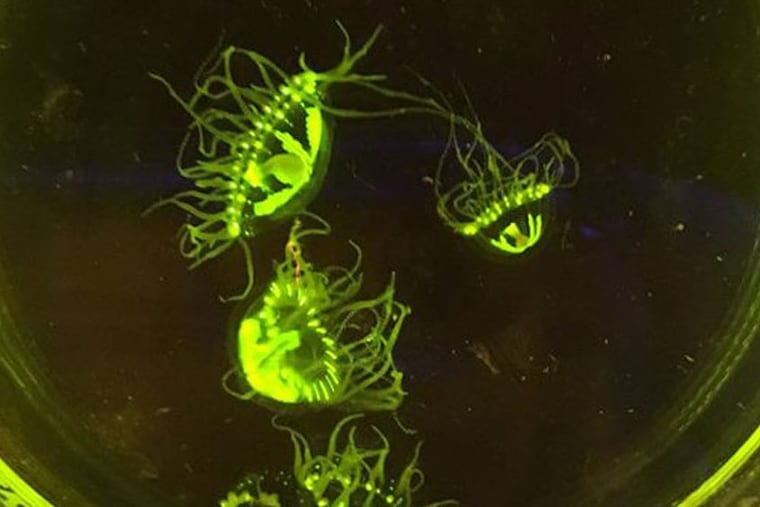Clinging jellyfish, known for excruciating stings, found in North Wildwood salt pond near inlet
Clinging jellyfish have been confirmed in a salt pond near a bathing area in North Wildwood, the first time the species with an excruciatingly painful sting has been found this far south in New Jersey

A young girl collecting sea creatures in North Wildwood recently scooped up some odd-looking jellyfish in a salt pond. Her parents quickly recognized they were no ordinary specimens.
The parents contacted a Montclair State University professor, who confirmed they were clinging jellyfish — a strain known for excruciatingly painful stings.
The state Department of Environmental Protection is advising the public to stay away from the pond, off East First Avenue near the widely visited Hereford Inlet Lighthouse. The pond is fed by a storm-water pipe from nearby roadways and is not normally used by bathers.
The pond is about 1,000 feet long and 240 feet at its widest. It is just a few hundred feet from the Atlantic Ocean.
However, it’s unlikely the clinging jellyfish will turn up in the ocean. The jellyfish, native to the Pacific, like shallow bays and estuaries, where tides are not strong enough to move them around. The ocean currents are too powerful for their liking.
They’ve been found in New Jersey recently, most notably last year in Barnegat Bay, but never so far south. Though just dime-size, Gonionemus vertens delivers such a sting that it can send victims to the hospital. In fact, two men stung last year ended up in the ER. The pain begins with the familiar “pins and needles” of a typical jellyfish string, but builds to become agonizing.
The girl who collected them in North Wildwood was not stung. Her parents alerted Paul Bologna, director of marine biology and coastal sciences at Montclair and one of the state’s experts on the species.
The DEP is collaborating with Montclair to monitor clinging jellyfish in the pond. It is also working with the state Department of Health to alert local health agencies.
Officials are increasing their monitoring of the species, and trying to understand how it’s moving around the state.
Clinging jellyfish were thought to have been introduced to the Atlantic Coast around 1894 in Woods Hole, Mass. They can now be found from Maine to New Jersey. They like temperate waters and live in habitats with dense eelgrass or seaweed beds. They feed on zoöplankton and copepods, preferring to cling to vegetation and algae during the day.
They are difficult to spot in the water. They are distinguished by a red, orange, or violet cross across their middle. One jellyfish can have from 60 to 90 tentacles containing stinging cells that deliver the painful neurotoxin.
The City of North Wildwood issued a statement saying that it was notified Tuesday about the presence of the clinging jellyfish:
“This tidal pool is in an environmentally sensitive area that has never been open for swimming. “The approximate location of the tidal pool is located between Surf and Central Avenues, immediately abutting the North Wildwood AngleSea Wall. Residents and visitors should heed the warning signs and not enter this area or the saltwater tidal pond for any reason.”
Mayor Patrick Rosenello urged anyone going into back bays to use caution, never swim in areas marked as prohibited, and to swim only at designated beaches when lifeguards are on duty.